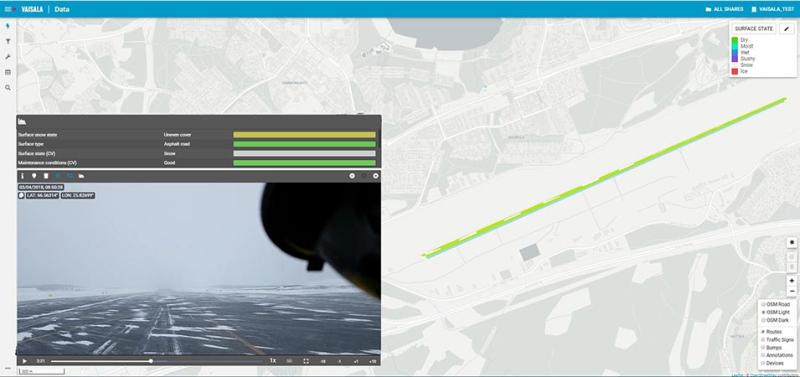Vaisala helps airports meet new ICAO requirements
Airports need to know what’s on the runway – not just weather conditions. That’s why we recently launched the new Vaisala Mobile GRF/TALPA Reporter. And not a moment too soon: this new product will help airports comply with new reporting requirements.
Runway safety is a top concern for aviation. In 2016, there were at least 30 weather-related runway accidents reported, according to ICAO.
The Global Reporting Format requirement
As of 5 November, 2020, airports will be required to use the new Global Reporting Format (GRF) for assessing and reporting runway surface conditions. The International Civil Aviation Organization (ICAO) is introducing this reporting methodology to help flight crews respond to surface conditions and, ultimately, make takeoff and landing smoother and safer.
Of course, new requirements mean new responsibilities for airport operators. ICAO’s new GRF requirements and the Federal Aviation Administration’s Takeoff and Landing Performance Assessment (TALPA) initiative will require reporting on conditions and contaminants for each third of the runway instead of focusing on friction measurement.
Vaisala Mobile GRF/TALPA Reporter solution
Fortunately, the GRF requirement doesn’t have to add more work for inspectors. Vaisala Mobile GRF/TALPA Reporter provides immediate, reliable reporting that does more than just comply with GRF. It also improves efficiency for airport operations.
Built on our proprietary Vaisala Mobile Detector MD30 sensor and Vaisala RoadAI technology, the Reporter performs up to 40 surface-state measurements per second. It measures a wide range of direct measurement parameters including frost, ice, snow, slush, and water coverage. This information lets decision-makers know what contaminants – and how much – is on the entire runway.
The solution works like this:
1. The vehicle-mounted MD30 assesses the runway surface state and contaminants.
2. RoadAI technology processes the MD30 sensor data.
3. The Reporter converts the data into the ICAO GRF-required text-based format.
4. An inspector reviews and approves the data on a computer or mobile device.
5. The Reporter forwards the approved info from RoadAI to decision-makers.
The Reporter works in virtually every condition with any fleet vehicle. The reports are accurate and consistent and give pilots the information they need to avoid runway overruns.
Visit the ICAO website to learn more about the GRF requirements, including webinars and training sessions.
Learn more about GRF/TALPA Reporter
Contact us to find out how integrating the Vaisala Mobile GRF/TALPA Reporter can help you gain ICAO GRF compliance.

Need to know the performance of Vaisala Mobile Detector M30, to introduce the same in my training course on GRF Runway Surface conditions
Regards
[email protected]